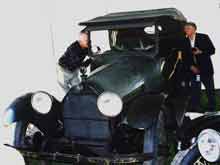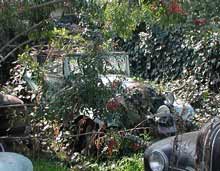Maple Leaf Rag
Everyone recognizes this as a Jeep; the more inveterate spotters among us will call it an M38, the military version of the CJ-3A built by Willys-Overland. The eagle-eyed will suspect that the maple leaf flag has some significance and well it does. This a Canadian Jeep, designated M38-CDN, built for the armed forces of Canada. It is also a Ford Jeep.
"Hold on!" you say. "Ford built Jeeps, yes, but that was during World War II." Indeed so. The US Army first selected a "Truck, Utility, 1/4 ton 4x4" designed by Karl Probst for the American Bantam Car Company. But when American Bantam had insufficient capacity to meet government orders, the main contract was let to Willys-Overland, a contender in the original competition. Later, Ford Motor Company, also a contender, was brought in, and for most of the war near-identical designs were built as the Willys MB and the Ford GPW. It's interesting to look at Ford's entry in the Army's "Jeep competition". Called the "Pygmy," it was powered by a 9N tractor engine and used many other off-the-shelf Ford components, particularly in the interior. This Pygmy was photographed at Hershey a number of years ago.
This M38-CDN Jeep was indeed built by Ford - assembled by Ford Motor Company of Canada in Windsor, Ontario. Ford of Canada put together 2,135 M38-CDNs between February and November 1952. Some interesting facts about the M38-CDN can be found at the M38 page on the Jeep Web Ring. I snapped the M38-CDN at Hershey 2003. It was billed as "motor redone," but the rest of the restoration was not for the faint-hearted.




